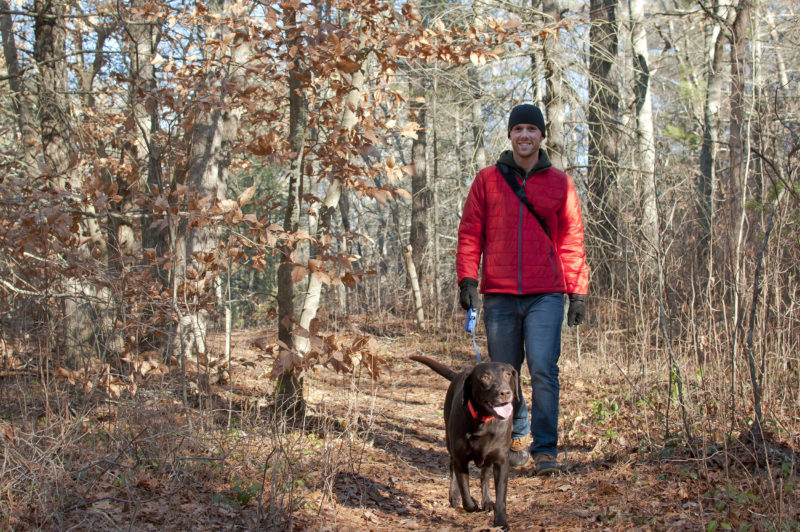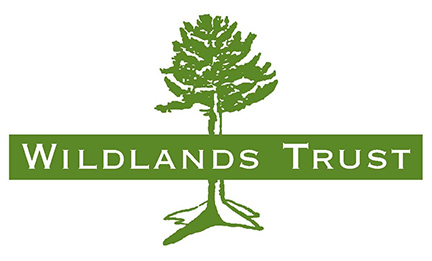Halfway Pond Conservation Area
Discover Plymouth’s peaceful ponds and woodlands by foot or canoe at Halfway Pond Conservation Area, a collection of five preserves owned by the Wildlands Trust. Located next to larger Myles Standish State Forest, these 400 secluded acres protect the “eye of Plymouth County” and support a unique pine barren ecosystem.
Features

Halfway Pond Conservation Area is a popular spot to walk dogs.
Halfway Pond Conservation Area lies in the shadow of neighboring Myles Standish State Forest, and its scenery of secluded ponds, oak-pine forests, and scrubby pine barrens is remarkably similar. It’s especially popular as a place to bring dogs to walk through the woods.
Although Halfway Pond is a less trafficked than the state forest, it’s also more remote. Be prepared to drive down narrow, unmaintained dirt roads to reach the parking areas.
Trails
You can explore more than five miles of interconnected, well-marked trails at Halfway Pond Conservation Area. Take a shorter loop with your dog, or walk for miles along the dirt roads that encircle the banks of Halfway Pond. (Download trail map)
From the main parking area on Mast Road, you can choose to walk in one of two directions. Head west to explore Gramp’s Loop Trail, a two-mile loop through a cathedral of white pines, pine barrens, and a large frost hollow. Or cross Mast Road and wander east through a three-mile network of trails and dirt roads sandwiched between three ponds. These trails traverse wooded hillsides, wetlands, kettle holes, and glacial erratics. We recommend heading toward Big Point: the tip of a large bluff that provides a panoramic view of Halfway Pond.
Habitats & Wildlife
Halfway Pond Conservation Area protects more than 400 acres along the shores of Halfway Pond, Gallows Pond, and Long Pond. These three ponds form the headwaters of the Agawam River, which flows all the way to the Wareham River and Buzzards Bay. The wooded island in the center of Halfway Pond is protected by the Nature Conservancy, and public access is not allowed.
Most of the land here is covered with oaks and white pines, with a few stands of beech trees at higher elevations. In the low woodland swamps, swamp azalea, swamp rose, and sweet pepperbush bloom in summer. Check out the pine barrens in spring, when unusual wildflowers poke up from the ground after a long winter.
Halfway Pond’s shores provide habitat for countless birds, from warblers and towhees to geese and woodpeckers. The pond is also home to the northern redbelly cooter (an endangered turtle) and two rare mussel species that thrive in these clean waters. With so many acres of protected forests around the pond, it’s known as a great place to spot a bald eagle – so keep an eye to the sky when you visit!

 Download Property Map
Download Property Map